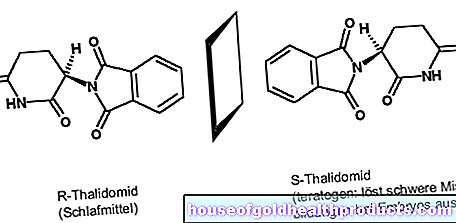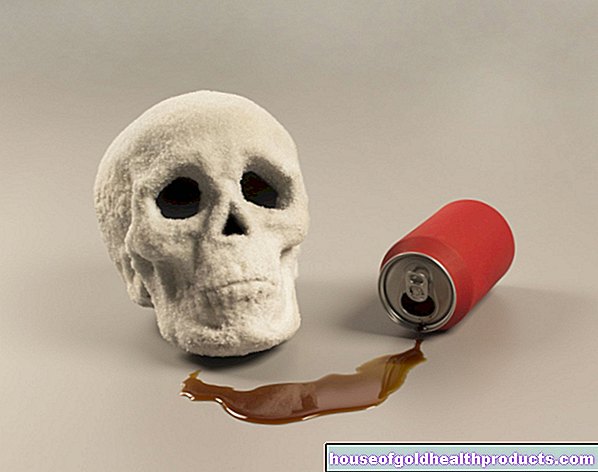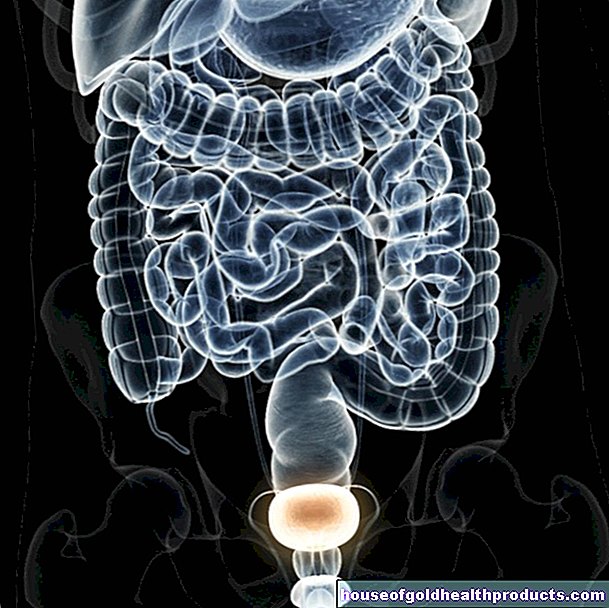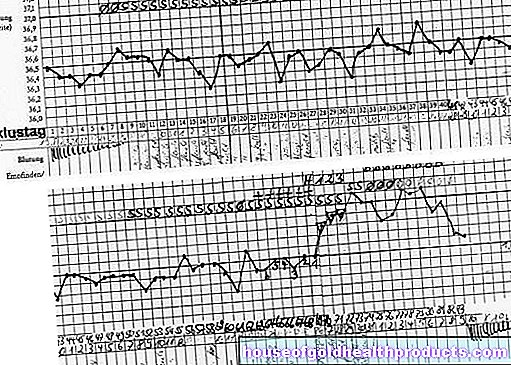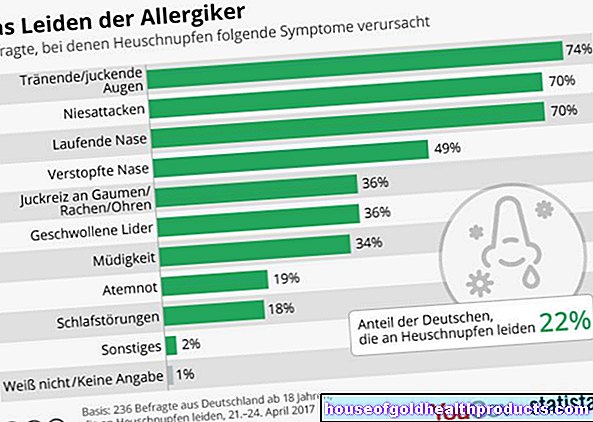Expert dispute over exhaust gas values - the arguments
Christiane Fux studied journalism and psychology in Hamburg. The experienced medical editor has been writing magazine articles, news and factual texts on all conceivable health topics since 2001. In addition to her work for, Christiane Fux is also active in prose. Her first crime novel was published in 2012, and she also writes, designs and publishes her own crime plays.
More posts by Christiane Fux All content is checked by medical journalists.A group of around 100 German lung specialists has rekindled the debate about the risks posed by air pollutants. In a position paper, they question the health benefits of the current limit values for fine dust and nitrogen oxides (NOx). In the meantime, a group of international experts have spoken out who oppose this. What are the arguments of the experts?
Controversial point 1: Has the danger of harmful substances really been proven?
The thesis of the position paper: Numerous studies indicate that fine dust and nitrogen oxides (NOx) damage the respiratory tract, heart and circulatory system, among other things. For their studies, international researchers examined many thousands of people to see whether people more often get certain diseases when they were exposed to higher levels of air pollution. The 100 signatories of the position paper around Prof. Dieter Köhler complain that such epidemiological studies do not provide any evidence for the connection between cause and effect.
In fact, it is not easy to provide such evidence in epidemiological studies: If, for example, it is found that more heart attacks occur in people with higher levels of particulate matter, this is not yet proof that the culprits are actually the pollutants. There could also be other factors to blame, for example that people who live in heavily polluted regions earn less money, do not eat as healthily and are less active in sports. Such confounding factors are factored out as far as possible in epidemiological studies. But Köhler and the co-authors of the position paper criticize that such co-factors were not sufficiently taken into account in the studies at hand.
The contradiction: International experts around Prof. Tobias Welte, President of the European Respiratory Society (ERS), contradict this representation. They emphasize that numerous international studies have taken the confounding factors into account.
In addition, it is scientifically undisputed that air pollutants promote disease and shorten the lifespan. This is not only indicated by epidemiological studies, but also by experiments that show how fine dust and nitric oxide affect the body directly.
Controversial point 2: Are the limit values set arbitrarily?
The thesis of the position paper: According to the circle around Köhler, a limit value can only be set if a so-called exposure study has been carried out beforehand. To do this, people would have to be exposed to different amounts of fine dust and nitrogen oxide in a targeted manner in order to be able to examine the health effects more closely. This is of course not ethically justifiable. Therefore, no clear limit values can be determined. And the fact that smokers survive much higher doses unscathed is evidence that the current limit values are set far too low.
The contradiction: There are no threshold values for the harmfulness of fine dust and nitrogen oxide below which they are harmless. The higher their concentration, the more damage they do. "Negative health effects also occur below the European limit values currently in force in Germany," the German Society for Pneumology and Respiratory Medicine stated in November last year.
Limit values are therefore often also political decisions. However, they should always be stipulated so strictly by the legislature that particularly vulnerable people such as children, the elderly and the sick would also be protected. "Limit values must have a sufficient distance from the effective thresholds and should avoid health hazards even with lifelong exposure," writes the Federal Association of Pulmonologists, Sleep Specialists and Ventilators. The limit values in the European Union are based on science-based recommendations from the World Health Organization (WHO).
Controversial point 3: Are smokers who inhale a thousand times the limit values a counter-evidence for the danger?
The thesis of the position paper: Smokers who consume one pack of cigarettes a day inhale the life-long dose of fine dust and nitric oxide of a non-smoker within a few weeks, argues the Köhler group. If these were as risky as claimed, most smokers would have to die within a few months.
The contradiction: the damage caused by fine dust and nitrogen oxide usually occurs gradually. For example, by triggering inflammatory processes in the body, which in the long term accelerate the narrowing of arteries and thus trigger a heart attack or stroke earlier. The same applies to other undisputed health risks such as an unhealthy diet or lack of exercise.
What is particulate matter and why is it harmful?
Fine dusts are tiny particles of different origins in the air. This can be soot, hydrocarbons or the finest sand. They arise, for example, through abrasion of tires, in industry and agriculture, but also in nature. Particles with a diameter of less than 10 micrometers (PM 10) can enter the airways. They can irritate the airways and provoke seizures in asthmatics. This is especially true for particles with a diameter of less than 2.5 micrometers (PM 2.5) that get deep into the lungs.
So-called ultrafine particles with a diameter of less than 0.1 micrometers are even more problematic. They can pass through the lungs and enter the bloodstream. Here they provoke chronic inflammatory reactions. In the long term, ultrafine particles favor cardiovascular diseases such as arteriosclerosis, heart attacks and strokes. Metabolic diseases such as type 2 diabetes are also favored by inflammatory processes.
According to the Federal Environment Agency, 65,000 people die prematurely every year in Germany due to fine dust.
According to the current limit values, the fine dust pollution from PM10 should not exceed 20 micrograms per cubic meter in the annual mean, and the fine dust PM2.5 should not exceed 10 micrograms per cubic meter in the annual mean. There is currently no legal limit for ultra-fine dust.
What is nitric oxide and why is it harmful?
The most important nitrogen oxides are nitrogen monoxide (NO) and nitrogen dioxide (NO2). These gases arise, for example, in internal combustion engines and combustion systems. Above a certain concentration, nitrogen oxides irritate the airways, causing chest pain, shortness of breath and coughing. They are especially problematic for asthmatics. People who inhale too much nitrogen dioxide for a long time are more likely to develop asthma, respiratory infections and cardiovascular diseases. Children whose airways are still developing, as well as the elderly and patients with cardiovascular or respiratory diseases are particularly at risk.
In addition, nitrogen oxides promote the formation of fine dust, which is then called "secondary fine dust". In doing so, they indirectly contribute to all health burdens that can arise from fine dust.
The annual limit value for nitrogen oxides in Germany is currently 40 micrograms per cubic meter on average. Even if the health risk from nitric oxide itself does not appear to be excessively high, a limit value makes sense, since the nitric oxide content correlates with many other pollutants and is therefore an important indicator of air pollution.
Who are the critics and who are the proponents of the limit values?
The much discussed criticism of the limit values comes from a group of lung specialists around the retired Prof. Dieter Köhler, the former president of the German Society for Pneumology and Respiratory Medicine (DGP). In total, around 100 of the company's more than 4,000 pulmonologists signed the position paper.
One answer came from researchers led by Prof. Tobias Welte from the Hannover Medical School, President of the European Respiratory Society (ERS). Together with 14 members of the Forum of the International Lung Societies FIRS, he drafted the replies to the position paper. The Federal Association of Pulmonologists, Sleep and Respiratory Medicine (BdP), which represents 1,700 specialists, has also contradicted the position paper.
Tags: tcm pregnancy birth sports fitness

.jpg)







